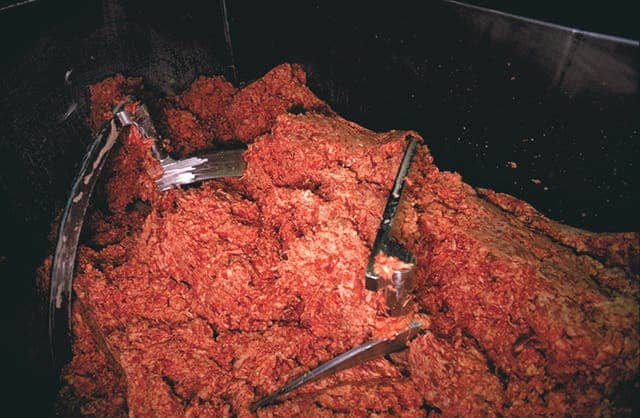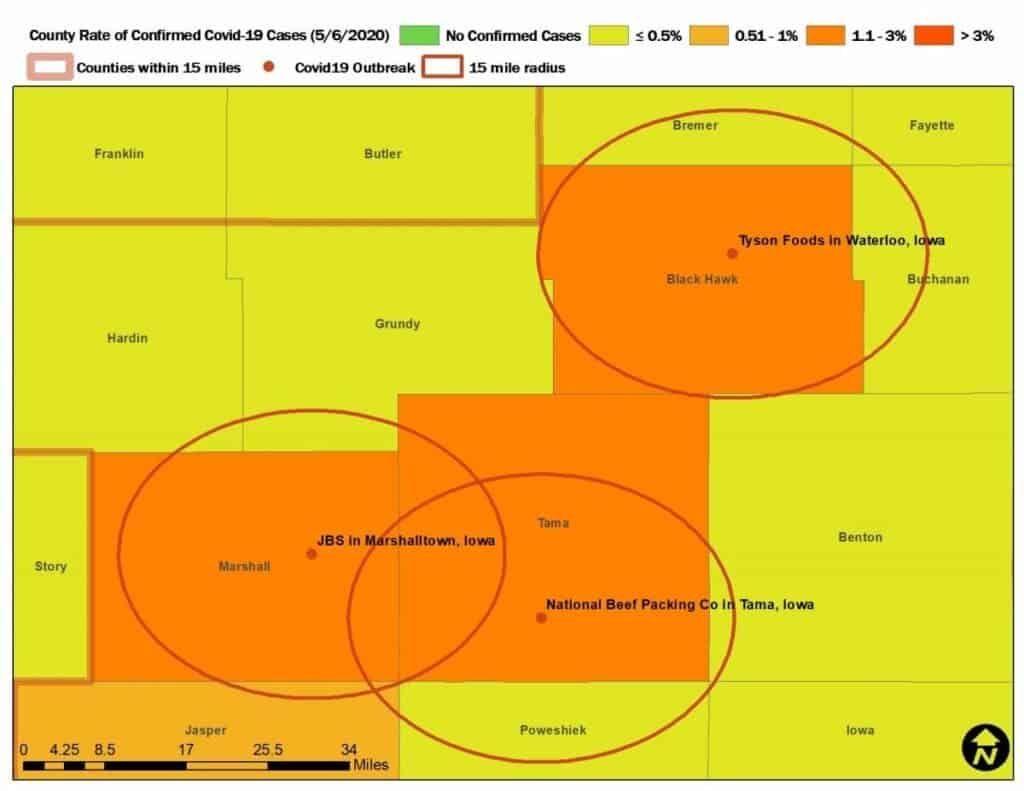US counties with (or very close to) meat processing plants have twice the rate of COVID-19 infections compared to the national average. In total, almost half of the current COVID-19 hotspots are linked to meat processing plants.

It was on March 19th that the US government published federal guidelines on social distancing and personal protective equipment. But the US meat giants, which include Tyson Foods, JBS USA and Smithfield Foods, continued pretty much business as usual. A thorough investigation including worker interviews, dozens of official documents, and complaints show that many meat processing plants continued without implementing distancing measures.
This turned out to be a severe mistake.
The first concerning data involving COVID-19 and meat processing plants emerged in mid-April, but by May, it was clear that many such plants are a hotspot. Over 1% of all meat workers have been diagnosed with COVID-19, with the real number being much higher. According to data from the CDC published in early May, over 115 meat plants across the entire country have infection cases.
Trump’s order to keep meat plants open did not do much to change the situation. Many workers were afraid to turn up to work, and the industry was divided in half — some continued (in large part because they couldn’t afford to stop working) while others did not. But almost everyone had the same feeling: they felt abandoned and betrayed by the companies that provide most of America’s meat.
Now, a new analysis sheds even more light on the connection between the outbreak and meat plants: it’s not only workers themselves that are at risk, but their communities as well.

According to a new geographical analysis, counties with processing plants where poultry, pigs, and cattle are slaughtered and packaged have seen a spike in the number of coronavirus cases.
The interactive map (which you can see here) reveals that meat plant outbreaks are among the largest drivers of the recent eight-fold growth in COVID-19 cases in rural America.
The problem is, in part, driven by the US meat industry itself. Per capita, Americans eat the most amount of meat in the world, but the production is directed by a very small number of large companies. This consolidation of the meat and poultry industry, dominated by a few larger players, revealed a surprisingly fragile supply chain system and very thin profit margins. For many plants, enforcing distancing measures could mean they suddenly become unprofitable.
Also, there are relatively few meat processing plants overall in the US — which means these tend to be large plants. This means that most plants are found in clusters, often at strategic locations close to the boundary of several states, where different companies are vying for the same market.

In the new analysis, published by the Environmental Working Group, a non-profit, non-partisan organization dedicated to protecting human health and the environment, it is shown that the area around meat plants often falls into two different counties or two different states. This puts communities in nearby areas at particular risk of exposure from multiple sources.
For example, Tama, Black Hawk and Marshall counties in central Iowa have three meatpacking plants – National Beef Packing in the town of Tama, Tyson Foods in Waterloo and JBS in Marshalltown. The three counties together average 1,483 cases per 100,000 residents, or approximately 1.5% — way above the national average. Another notable example shows the Tyson Foods plant in Dakota City, Nebraska, where 669 infections were reported. The two neighboring counties also show a much higher rate of infection than the national average, as shown below.

The analysis only established a correlation, but the evidence is very suggestive, especially when considering how generalized the problem seems to be. Meat processing plants did not ensure sufficient protection for their workers and as a result, many plants have become infection hotspots.
In a recent article, sociologist Michael Haedicke explained why this is not surprising:
“First, working conditions experienced in meatpacking plants, which are shaped by the pressures of efficient production, contribute to the spread of COVID-19. Second, this industry has evolved since the mid-20th century in ways that make it hard for workers to advocate for safe conditions even in good times, let alone during a pandemic.
Together, these factors help to explain why U.S. meatpacking plants are so dangerous now – and why this problem will be difficult to solve.”
The fact that many plants are in rural areas, where people don’t have a history of unionizing (and often have strong anti-union sentiments) means that most such plants don’t even have a union in place — and this leaves individual workers powerless when it comes to asking for better conditions.
In time, meat plants grew larger, and a handful of firms such as Cargill and Tyson came to dominate processing of beef, poultry, and other meats. Consolidation gave these firms an even greater ability to control working conditions and left workers even more vulnerable.
Unfortunately, this means that infections in meat plants are likely a problem that is here to stay.
“Despite President Trump’s reassurances that closed plants will reopen safely, I expect that the pressures of efficiency and limits on workers’ ability to advocate for themselves will cause infections to persist,” Haedicke concludes.
“In meatpacking as in other industries, the pandemic has revealed how people who do “essential” work for Americans can be treated as if they are expendable.”


